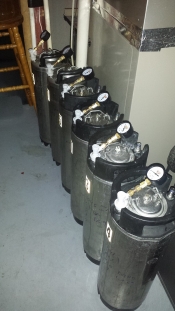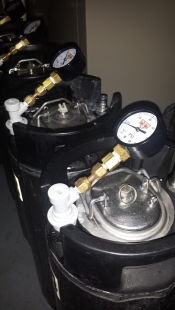I have been struggling and being able to get the proper carbonation when I carbonate my kegs. I have tried the set it and forget it and the force carbonating both with mixed results. The last two kegs I have seemed to have the proper carbonation with minimal foam.
My question to the forum is that I am trying to come up with a standardized way of carbonating and being able to monitor the carbonation level. I would like for the forum to review my methods and tell me if I am doing it right.
1. Cool the keg to 35 - 40 degrees
2. Attach the CO2 gas to the out side of the keg.
3. Attach a keg pressure monitor gauge to the in side.
4. Turn the gas on to the appropriate carbonation level for the beer to be and let it sit.
5. Check daily and when the pressure gauge on the in side says what ever the appropriate pressure should be turn off the CO2.
6. Hook up the CO2 to the in side and the beer side to the out and pour.
So far this has worked. My question is having the keg pressure monitor gauge on a accurate way to monitor carbonation levels?
TD
My question to the forum is that I am trying to come up with a standardized way of carbonating and being able to monitor the carbonation level. I would like for the forum to review my methods and tell me if I am doing it right.
1. Cool the keg to 35 - 40 degrees
2. Attach the CO2 gas to the out side of the keg.
3. Attach a keg pressure monitor gauge to the in side.
4. Turn the gas on to the appropriate carbonation level for the beer to be and let it sit.
5. Check daily and when the pressure gauge on the in side says what ever the appropriate pressure should be turn off the CO2.
6. Hook up the CO2 to the in side and the beer side to the out and pour.
So far this has worked. My question is having the keg pressure monitor gauge on a accurate way to monitor carbonation levels?
TD





